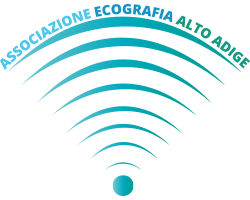SDMS – Guidelines for Infection Prevention and Control in Sonography
Reprocessing the Ultrasound Transducer
SDMS – Society of Diagnostic Medical Sonography
Scope
The diagnostic medical sonography profession is comprised of specialties in abdominal, breast, cardiac, obstetrics, gynecology, musculoskeletal, pediatric, phlebology, vascular, and other emerging clinical areas. These diverse areas of sonography all use ultrasound as the primary technology in their daily work.
Sonographers have a responsibility to ensure that the ultrasound transducer (“transducer”) and other equipment used are properly reprocessed. These guidelines specifically address the use, handling, cleaning, disinfection or sterilization, transport, and storage of transducers (hereinafter referred
to as “reprocessing”) used in diagnostic medical sonography, but not those used for endoscopic, intracardiac, intravascular, or laparoscopic purposes.
Because of the sensitivity of the transducer’s materials and electronics to some reprocessing techniques, gaps may exist in the ability to perform the desired method of reprocessing for the transducer. Therefore, while these guidelines address current best practices, users of these guidelines should recognize that best practices will evolve over time based on technological advances and new research.
To ensure the facility has the capability and capacity to adequately clean and reprocess the transducer, sonographers should obtain and review the manufacturer’s Instructions for Use (IFU) or other guidance on use, handling, and reprocessing of the manufacturer’s equipment before purchasing. Manufacturers and suppliers should ensure guidance on use, handling, and reprocessing specific to each machine, transducer, or other equipment is easily accessible on their website. Manufacturers and companies that refurbish transducers should take the steps necessary to prevent contamination during or after the manufacturing or refurbishment process. However, regardless of the source, a newly acquired, non-sterile transducer should be processed as if it was used previously.
While these guidelines focus on the reprocessing of the transducer, the importance of infection prevention and control principles apply equally to the ultrasound machine and any ancillary equipment used during the procedure (e.g., cables, keyboards, beds, chairs, IV poles, oxygen systems, cords). Cross-contamination of the ultrasound machine, ancillary equipment, and other surfaces (e.g., gel bottles, light switches, door knobs/handles) presents significant infection prevention and control risks and challenges. Where applicable, refer to the manufacturer’s IFU or the facility’s policies for the proper reprocessing (as applicable) for ultrasound machines, transducers, and any ancillary equipment. New technologies (e.g., transducers connected to smartphones or tablets) will add new risks and challenges that the manufacturer, facilities, and sonographers must address in the future.
Note: These guidelines apply only to transducers used to scan humans and not those used to scan animals.
Fonte:
Journal of Diagnostic Medical Sonography 2020, Vol. 36(4) 381-403
© The Author(s) 2020
Article reuse guidelines: sagepub.com/journals-permissions
DOI: 10.1177/8756479320933256
journals.sagepub.com/home/jdm
